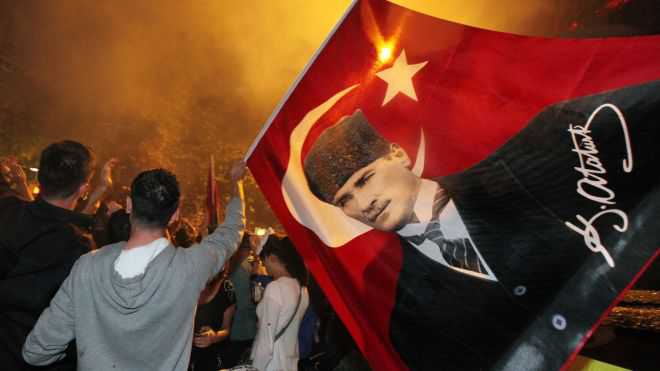JOOST LAGENDIJK
J.lagendijk@todayszaman.com
Understanding Atatürk
It remains one of the biggest mysteries for foreign visitors to Turkey: Why are the pictures and statues of Mustafa Kemal Atatürk still so omnipresent more than 70 years after his death?
There is no country in Europe where you will find a similar situation. In monarchies, portraits of the ruling king or queen adorn official state offices, but these are depictions of the living monarch and will be replaced after his or her rule with those of his of her successor. In republics, the same applies to the president in office. Nowhere else will you find such an abundance of representations of a former king or president so many years after his death. For many Europeans, this calls to mind all sorts of associations with the former communist countries in Central and Eastern Europe or the present day authoritarian regimes in Central Asia, governed by anti-democratic ideologies and old-fashioned despots. By both counts, these comparisons do not bode well for a positive opinion of Turkey.
On the other hand, most Turks find it hard to cope with this Western incomprehension. They blame the visitors for their insensitivity and lack of knowledge about Turkish history and defend Atatürk’s ongoing domination of public spaces by referring to his pivotal role in saving the country from annihilation 90 years ago and for laying the still invaluable groundwork for today’s Turkey. You will probably find more ardent supporters of Atatürk among the Turks who do not vote for the current ruling party, but even among the Justice and Development Party (AK Party) rank and file, many would passionately make the case for honoring Atatürk’s legacy in such a visible way.
I vividly recall an incident some years ago when a then-colleague from the European Parliament, knowledgeable about the country and strongly in favor of Turkey’s accession to the EU, cautiously suggested in an off-the-record conversation with Turkish journalists that maybe one day, as a sign of strengthened democracy and growing self-confidence in Turkey, the pictures of Atatürk might slowly fade away. His remarks were leaked and caused a flurry of commotion in the Turkish media. Before being able to visit Turkey again, he had to explain publicly that he did not intend to insult Atatürk or his ideas.
The Atatürk perception gap between Turks and non-Turks is not going to disappear quickly. But there is good news for those who find it important to bridge that divide and stimulate some common understanding about the founder of the Turkish republic. Now for sale in Turkish bookshops is the latest publication by Şükrü Hanioğlu, a professor at Princeton University in the US and a distinguished scholar on the late Ottoman Empire and the early republic. The book is called “Atatürk: An Intellectual Biography.” In less than 250 pages and in a very accessible style, Hanioğlu shows how the founder of the Turkish Republic was an intellectual and social product of the late 19th and early 20th centuries. Through an analysis of Atatürk’s life, ideas and work, the author explores the uneasy transition from the late Ottoman imperial order to the modern Turkish nation-state and traces Atatürk’s intellectual development.
The book is a must read for both Turks and non-Turks. Turkish historiography tends to view Atatürk as a solitary genius who singlehandedly wrought a miracle in the form of modern Turkey. One way of showing respect for this extraordinary achievement is by hanging his picture on all Turkish walls even today. While fully acknowledging the enormous impact of his leadership, Hanioğlu explains the ways in which Atatürk’s views were shaped, for instance, by his Thessalonikian background and his education at non-religious and military schools. In constructing his vision of a new Turkey, Atatürk acquired most of his ideas from Western and Ottoman grand theories on the importance of science and the diminishing role of religion in the modern world. The book does not shy away from criticism and explains that the radicalism of Atatürk’s program led to the authoritarian character of his politics. Like many other transformative state builders, he harbored little tolerance for dissent or criticism.
Let us hope that, after reading this book, both foreigners and Turks alike will have a better understanding of who Atatürk really was, where he got his ideas from and why he is so important to Turkey. We will see in 20 years time whether this improved and more balanced awareness will have an impact on the number of pictures and statues of Atatürk in this country and the appreciation for them by guests and hosts alike.
via Understanding Atatürk.
